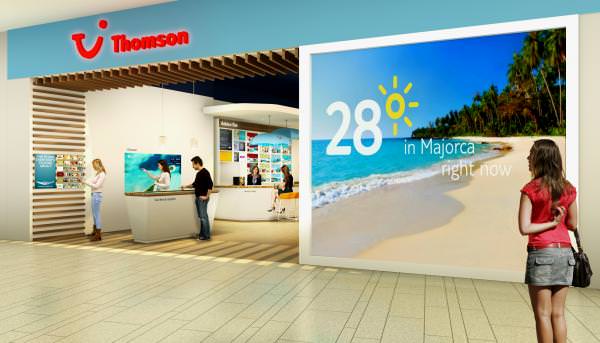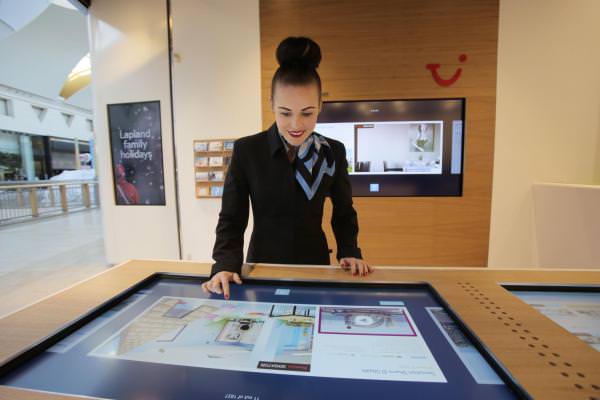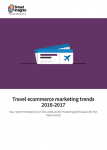Lesson’s from TUI’s digitally integrated concept store
Omnichannel is now the de-facto retail strategy for major travel brands or is at least often the desired goal. TUI explored the concept of going ‘beyond Omni-channel’. ‘Beyond-Omni-channel’ to me sounded a lot like ‘Post-digital’, a term that is often misleading. Post-digital is about digital being pervasive and everything being digital, rather than having moved beyond digital. It makes good points regarding the breaking down of silos between departments, but the term ‘post-digital’ doesn’t convey this clearly.
How an Omnichannel travel-booking approaches reinforces the strength of individual channels
An interesting point regarding the effectiveness of TUI’s travel agency service made was that the distribution channels were in no way mutually exclusive, and in fact were self-reinforcing. A survey conducted by TUI discovered that 30% of their customers started their customer journey through a different medium to the way they eventually paid for the holiday.
One third of their sales are still taking part in their physical stores, and they find that often these people had already used the site extensively for research. Many came first to physical branches and then bought online, whilst others researched online at first and then came into a branch to purchase and finalise details.
Doug explained that the customer has become multi-channel focused and the customer journey more complex. Because of this, every interaction with the brand, whether online or in physical branches needs to be optimised to avoid pushing customers to competitors rather than returning to other channels to complete the purchase.
The survey previously mentioned by TUI also found that having physical branches increased customer trust in the brand, even among those who were only researching and purchasing their holidays via the website. Having physical branches gives somewhere concrete to rely on and means there is always the opportunity to meet a representative of the company face to face should any problems emerge. An interesting point to bear in mind for retail businesses considering a shift to digital and ecommerce.
In-store travel technology
The way TUI went about optimising its Omnichannel strategy involved the integration of digital within physical stores, which reflected what customers were already doing. They focused on making sure the technology put into their stores was delightful, usable and useful. It had to excite in order to generate interest in the products on offer, it had to be useable even by the more technophobic elements of their customer base and it had to provide a solution to customer’s problems.
TUI used large screens on their storefronts to display excellent content to excite customers. It never showed offers or prices or details, but simply tried to convey how incredible the holiday experiences on offer were.
On entering the store, there are interactive maps on the walls which customers can touch to research specific destinations, as well as show friends and family where they have been. The map screen was made large enough so that other customers could see what other customers were looking at to help inspire them to consider holiday destinations they possibly would not have considered otherwise.
When clicking on certain areas on the map more information can be gathered on specific hotels and destinations, where video content and reviews are displayed.
Table-size touch screens are also dotted around the store to allow customers to research their holidays via powerful search functions where they can use a series of filters and search criteria to narrow in on their dream holidays.
The touch screens can also email content back to users from any screen to remind them what they discovered once they return home to review with their partners than families.
An additional feature is users can research their holidays by ‘mood’, where they are shown various photos of different holiday activates and they select as many as they want and are then given suggestions about what holidays they may enjoy.
When customers have booked their holidays within the store they are encouraged to take selfies which are then shared with their social communities, generating excitement for the customer and possibly attracting additional business for no advertising expenditure.
Technology is essential for good integration between digital and physical channels, and by integrating these channels well they can deliver better increases than by optimising either independently.
The results
The results of the technology integration into physical stores were excellent. It delivered ROI via a massive sales increase (sales tripled in their Bluewater flagship store where the changes were pioneered) and average spend also increased in the stores that transformed via the aforementioned technology. TUI was also able to reduce discounts and got excellent feedback regarding the changes from customers, and won several awards.
These changes which were made initially in TUIs blue water store have now been rolled out to 30 shops across the country this has again delivered impressive results.
source http://www.smartinsights.com/ecommerce/multichannel-retail-strategy/omnichannel-travel-retail-strategy-a-case-study-of-a-new-digital-in-store-technology/



No comments:
Post a Comment